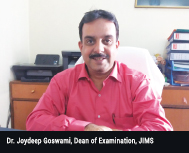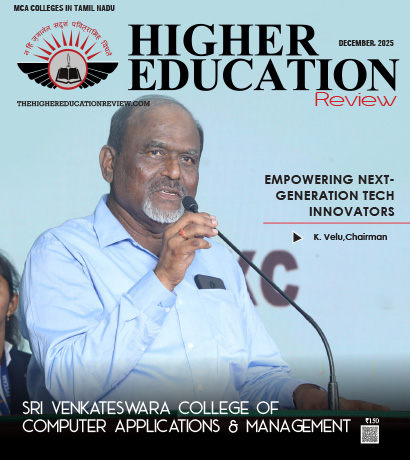Dynamics of Youth Population and Expenditure on Education in India

India has a diverse youth population (13 - 35 years) in terms of ethnic origin, religion and socio-economic setting. There are diverse communities with their distinct customs, cultures, and values. Such diversities require customized initiatives to meet the needs of youth. The policies and programs on youth have been implemented from time to time for the development of the youth in particular. Youth comprises 18 percent of world's population and of this about 85 percent lives in developing world. A third of India's population was below 15 years of age and close to 20 per cent were young people in the age groups of 15-24. Close to 61 percent of the population in India belong to the age group of 13-59 years and 38 percent of them belong to the age group of 13-34 years.
Youth and Education level
Education plays a vital role in achieving human development and hence the universalization of school education and complete eradication of illiteracy among the people in the age group of 15 to 35 years is one of the basic objectives of the five years plan. Substantial gains have been made in literacy and education levels in India since independence. In the first half of the 20th century rise in literacy rate was comparatively slow. In 1901, a little over five percent of Indian population was literate, which increased to around 16 percent in 1950, an increase of just 11 percentage points in five decades. In the post-Independence period, the decadal growth in literacy has shown a considerable progress, i.e., from 18.3 percent (5+ age group population) in 1951 to 75 percent (7+ age group populations) in 2011. Despite stringent efforts on the part of the government and various social organizations in implementing compulsory education during the last six decades about 22 percent of the youth between the age group of 13 to 35 years in India are still illiterate. Going into the details it is revealed that the illiteracy level is around 35 per cent in the age group of 25 to 35 years.
Education and Household Expenditure in India
An analysis of household expenditure in the past decade reveals that the average household has been spending on an increasing number of different goods. An average Indian household in rural areas spends about 2.7 percent of the total monthly expenditure on education while the urban counterparts spend about 5 percent. More strikingly, it is revealed that the amount of household spends on education in rural areas is almost same the amount spent of pan, tobacco and intoxicants. It was observed that due to declining priority of education in the public policy paradigm in India, there has been an exponential growth in the private expenditure on education.
With the increase in the cost of education in recent years the larger families tend to spend more on tuition fees and on books and journal. The household with smaller family size tend to spends more on private tutors for their children and even seems to spend more on newspaper and periodicals. This indicates that the larger families tend to spends more on the basic education needs than on other components of education. This is accepted fact that the amount households spend on education depends upon the returns to education prevalent in the region in which they live. Various studies have shown and proved the fact that the household expenditure on education increases with the increase in the level of education. A household in India spends on an average Rs. 116 per month on education though there seems to be increase in education expenditure by about 41 per cent during 1993-94 and 2004-05.
The bulging youth population in the country faces the music of higher level of poverty and lesser expenditure on education. With 23 percent of the household still living below the poverty line the monthly average household expenditure on education is determined to be around Rs. 120. Against the government expenditure on education being only 4 percent of the GDP, the proportion of household expenditure on education of the total household expenditure is around 3.6 per cent. The urban household on an average spend around 5 percent of the total household expenditure on education compared to about 2.7 per cent in rural areas. With only 4 per cent of the youth graduate in the country the proportion of household expenditure on education seems to have an impact on the education achievement among the youth.
Dr. Joydeep Goswami
He is an able academician and researcher with demonstrated abilities in Research. Started a career with North Eastern Hill University (NEHU) in Shillong, as Research Associate and later shifted to teaching economics at both undergraduate (Honours Subjects) and Post graduate level. Dr. Goswami joined (NCAER) as Consultant and worked extensively on the project like India Human Development Report, Sponsored by University of Maryland, USA, Third Handloom Census, sponsored by Ministry of Textiles, Govt. of India and so on. Dr. Goswami is associated with research organizations including NCAER and BRIEF. He has a few research project reports and research papers to his credit.
Youth and Education level
Education plays a vital role in achieving human development and hence the universalization of school education and complete eradication of illiteracy among the people in the age group of 15 to 35 years is one of the basic objectives of the five years plan. Substantial gains have been made in literacy and education levels in India since independence. In the first half of the 20th century rise in literacy rate was comparatively slow. In 1901, a little over five percent of Indian population was literate, which increased to around 16 percent in 1950, an increase of just 11 percentage points in five decades. In the post-Independence period, the decadal growth in literacy has shown a considerable progress, i.e., from 18.3 percent (5+ age group population) in 1951 to 75 percent (7+ age group populations) in 2011. Despite stringent efforts on the part of the government and various social organizations in implementing compulsory education during the last six decades about 22 percent of the youth between the age group of 13 to 35 years in India are still illiterate. Going into the details it is revealed that the illiteracy level is around 35 per cent in the age group of 25 to 35 years.
Education and Household Expenditure in India
An analysis of household expenditure in the past decade reveals that the average household has been spending on an increasing number of different goods. An average Indian household in rural areas spends about 2.7 percent of the total monthly expenditure on education while the urban counterparts spend about 5 percent. More strikingly, it is revealed that the amount of household spends on education in rural areas is almost same the amount spent of pan, tobacco and intoxicants. It was observed that due to declining priority of education in the public policy paradigm in India, there has been an exponential growth in the private expenditure on education.
With the increase in the cost of education in recent years the larger families tend to spend more on tuition fees and on books and journal. The household with smaller family size tend to spends more on private tutors for their children and even seems to spend more on newspaper and periodicals. This indicates that the larger families tend to spends more on the basic education needs than on other components of education. This is accepted fact that the amount households spend on education depends upon the returns to education prevalent in the region in which they live. Various studies have shown and proved the fact that the household expenditure on education increases with the increase in the level of education. A household in India spends on an average Rs. 116 per month on education though there seems to be increase in education expenditure by about 41 per cent during 1993-94 and 2004-05.
The bulging youth population in the country faces the music of higher level of poverty and lesser expenditure on education. With 23 percent of the household still living below the poverty line the monthly average household expenditure on education is determined to be around Rs. 120. Against the government expenditure on education being only 4 percent of the GDP, the proportion of household expenditure on education of the total household expenditure is around 3.6 per cent. The urban household on an average spend around 5 percent of the total household expenditure on education compared to about 2.7 per cent in rural areas. With only 4 per cent of the youth graduate in the country the proportion of household expenditure on education seems to have an impact on the education achievement among the youth.
Dr. Joydeep Goswami
He is an able academician and researcher with demonstrated abilities in Research. Started a career with North Eastern Hill University (NEHU) in Shillong, as Research Associate and later shifted to teaching economics at both undergraduate (Honours Subjects) and Post graduate level. Dr. Goswami joined (NCAER) as Consultant and worked extensively on the project like India Human Development Report, Sponsored by University of Maryland, USA, Third Handloom Census, sponsored by Ministry of Textiles, Govt. of India and so on. Dr. Goswami is associated with research organizations including NCAER and BRIEF. He has a few research project reports and research papers to his credit.

